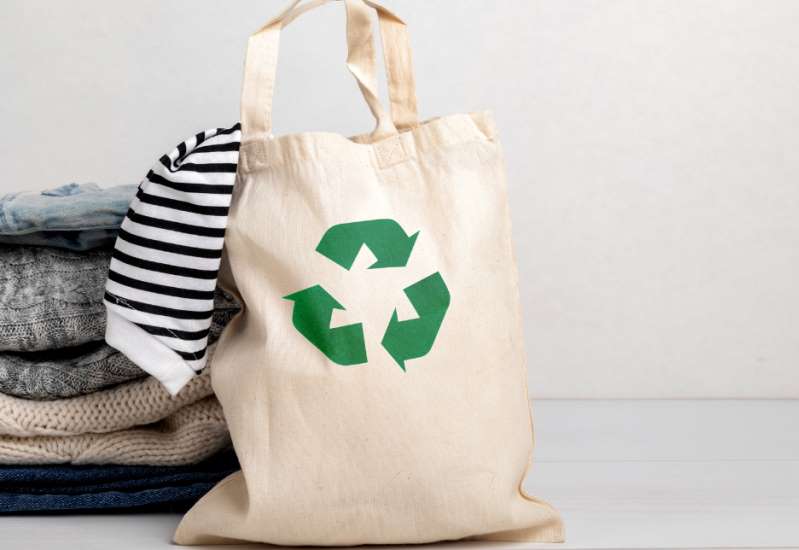FW
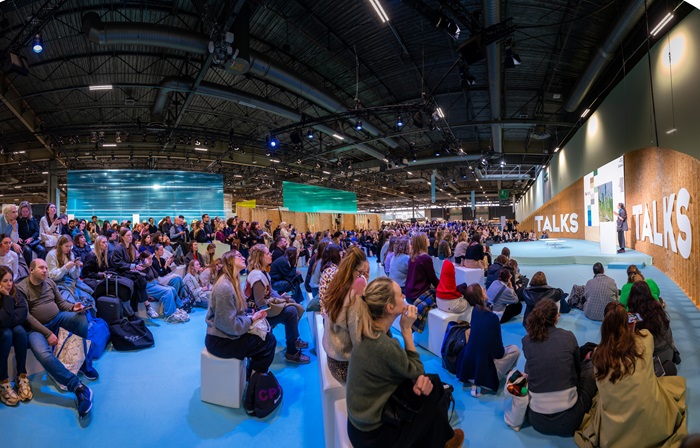
Premiere Vision Paris, held from February 11 to 13, 2025, brought together key players in the creative and responsible fashion industry. Focused on know-how, the event reinforced its role in shaping the sector’s global transformation, catering to all segments from mass distribution to luxury.
Returning to its historical agenda, Premiere Vision now features two distinct editions: Savoir-faire in February and Innovation & Tech in September. This year’s event also introduced a forward-looking fashion space, expanding its scope to include beauty. The show continues to grow, setting bold ambitions for its international reach.
Strong global participation
The latest edition attracted nearly 30,000 international professionals from 126 countries, representing over 13,000 companies. Around 1,100 exhibitors from 40 countries, including Italy, France, Spain, Portugal, Japan, the UK, Belgium, South Korea, Turkey, and China, showcased their latest innovations. The Hosted Guests program welcomed 220 key decision-makers, while 1,500 business meetings were facilitated through the Matchmaking program.
Florence Rousson, President of the Premiere Vision Management Board and General Manager of The Creative Pole, highlighted the event’s significance in driving industry growth. She emphasized Première Vision’s commitment to offering a curated, selective platform while personalizing the visitor experience. The event also hosted the annual plenary session of the French Fashion & Luxury Industry Strategic Committee, where over 100 professionals discussed the sector’s future.
High-profile delegations
Première Vision Paris reaffirmed its status as a key platform for global industry development. It welcomed delegations from Portugal, South Korea, Egypt, Tunisia, Brazil, and Indonesia. Representatives from the European Apparel and Textile Confederation (EURATEX), the International Wool Textile Organisation (IWTO), and Quebec’s fashion organization mmode were also present. Additionally, renowned Indian designers, the Moroccan Association of Textile and Apparel Industries (AMITH), and Japan Fashion Week representatives participated in the event.
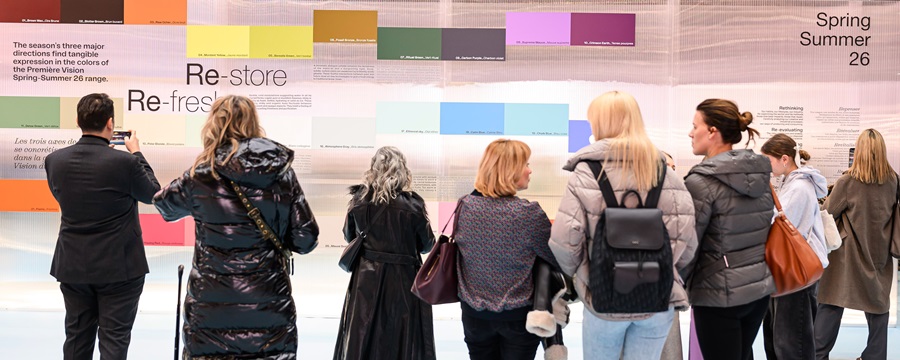
Strengthening business support
The trade show introduced several initiatives to help businesses navigate industry challenges. The updated Premiere Vision mobile app now features an enhanced directory, instant messaging, an AI assistant, and personalized event planning. The Hosted Guests program facilitated key networking opportunities, ensuring international decision-makers connected effectively. Conference stages hosted 21 talks and 22 pitches, featuring 75 speakers discussing know-how, innovation, and sustainability. The Inspiration Forum showcased Spring-Summer 2026 trends, sustainable craftsmanship, and innovative designs in leather, fabrics, and accessories. The Sourcing Solutions Forum guided professionals in selecting suppliers and eco-friendly materials.
Fashion Director Desolina Suter stressed the growing importance of sustainability in fashion. She highlighted the role of know-how in reimagining a more responsible industry focused on resource conservation and circularity.
Expanding the creative pole
During the event, Florence Rousson unveiled ‘The Creative Pole,’ GL events newly named fashion division. It unites 18 events under three brands: Premiere Vision, Tranoï, and Fashion Source. Additionally, she announced the launch of the International Observatory of Creation, a strategic tool to analyze trends and industry shifts.
Rousson emphasized The Creative Pole’s role in fostering industry transformation, strengthening global connections, and building synergies across the fashion supply chain. She expressed enthusiasm for the upcoming edition, scheduled for September 16-18, 2025, where innovation and technology will take center stage.
Fakir Fashion Limited, one of Bangladesh’s largest vertically integrated garment manufacturers, has implemented Coats Digital’s GSDCost solution to standardise production, enhance cost management, and optimise resources.
Based in Narayanganj, Fakir Fashion produces 300,000 garments daily with over 18,000 employees. It supplies top global brands like H&M, Zara, Guess, and Tom Tailor and has earned accolades such as Best Supplier in Bangladesh by Inditex and Top Global Supplier by Esprit.
Despite its advanced infrastructure, Fakir Fashion faced challenges like inconsistent Standard Minute Values (SMVs), skill gaps, and reliance on manual Excel-based processes. GSDCost will help streamline operations, improve cost accuracy, and reduce inefficiencies.
Managing Director Fakir Kamruzzaman Nahid stated: “As a leading supplier, we continuously invest in innovation to enhance efficiency, competitiveness, and sustainability. GSDCost will standardise our processes, minimise manual dependency, and improve cost predictions, reinforcing our commitment to excellence.”
Coats Digital’s GSDCost solution provides scientifically validated time benchmarks to optimise production, improve line balancing, and cut inefficiencies. Fakir Fashion anticipates at least a 2 per cent productivity boost in the initial phase, alongside cost savings and reduced overtime.
Md Anisur Rahman Bhuiyan, Senior Sales Manager at Coats Digital, welcomed Fakir Fashion’s adoption of GSDCost, emphasizing its role in enhancing efficiency and competitiveness in the apparel sector.
Fakir Fashion plans to integrate GSDCost with its ERP system to enable real-time data insights, ensuring better decision-making and operational transparency. This investment aligns with the company’s strategy to adopt sustainable, tech-driven solutions that support growth while maintaining quality and cost efficiency.
Valued at $29.1 billion in 2023, the global sustainable fabrics market is forecast to reach $74.8 billion by 2032, growing at a 12.5 per cent CAGR. As per a report by Market Research Future, this growth is likely to be fueled by increasing consumer awareness, stricter regulations, technological advancements, and corporate sustainability initiatives. However, the market faces challenges like high production costs, limited availability, greenwashing, and a lack of standardization.
Driven by millennials and Gen Z, consumer demand for eco-friendly products will be major growth driver for the global sustainable fabrics market. With regulatory pressures, such as the EU's Circular Economy Action Plan, compelling brands to adopt sustainable practices, textile technology innovations, including waterless dyeing and biodegradable fibers are making sustainable production more feasible. Major brands are incorporating sustainable materials into their product lines.
However, high production costs associated with organic materials and ethical labor practices pose a challenge to this market. Limited availability of sustainable raw materials hinders growth. Greenwashing practices continue to erode consumer trust with the lack of universal standards and certifications creating further confusion.
Circular economy models, like recycling and upcycling, offer significant potential for the global sustainable fabrics market. Collaboration between stakeholders can drive innovation in this segment. Consumer education and supply chain transparency are also crucial with continued investment in textile technology, such as biofabrication, promising future advancements.
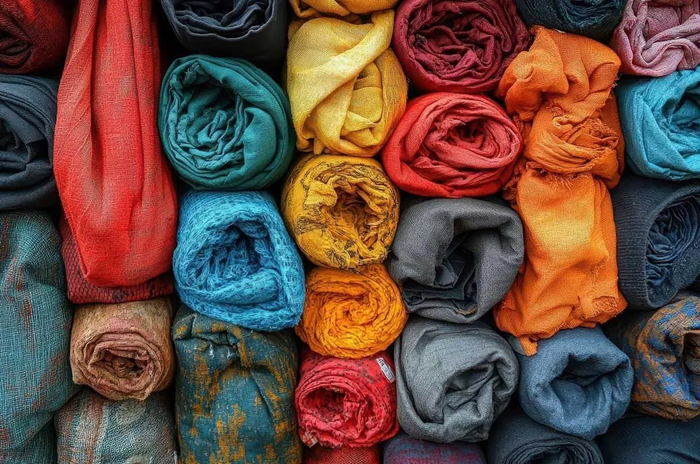
The US recent imposition of new trade tariffs on apparel and textile imports, coupled with rising geopolitical tensions, will definitely impact the global sourcing landscape for these goods. These tariffs, intended to boost domestic production and reduce reliance on specific nations, are converging with other powerful forces, creating both challenges and opportunities for manufacturers, retailers, and consumers. As a Kearney report highlights, the Global South is at an "inflection point," and these trade dynamics are accelerating its rise.
The rise of global south
The new tariffs are expected to incentivize US companies to diversify their sourcing strategies, shifting away from countries heavily affected by the tariffs. This aligns with the broader trend of the Global South gaining prominence in the worldwide sourcing landscape. As Kearney's Terry Toland points out, "It is striking, just in the context of apparel and textiles, how many global South countries are front and center," with countries like China, Bangladesh, Vietnam, and India collectively representing a substantial portion of global textile and apparel trade. This shift is not merely a reaction to tariffs but a consequence of long-term economic growth and increasing influence of these "middle powers."
Opportunities in a multipolar world
While the tariffs may create opportunities for some countries, particularly those in the Global South, they also pose challenges. Countries heavily reliant on apparel and textile exports to the US may face economic setbacks. Moreover, the tariffs could lead to increased costs for US businesses, potentially resulting in higher prices for consumers. This occurs within a complex geopolitical context, where, as the Kearney report notes, "geopolitics is back." The rise of the BRICS alliance, increased South-South trade, and growing middle classes in developing economies are all contributing to a multipolar world, where trade relationships are increasingly influenced by factors beyond pure economics.
The following table, informed by US Department of Commerce data and the insights from the Kearney report, illustrates the potential impact of the tariffs on US apparel and textile imports from various regions.
Table: Tariffs impact on US textile and apparel trade
|
Region |
Current import value ($ bn) |
Potential tariff impact |
Change drivers |
|
China |
40 |
Significant decrease |
Tariffs, Diversification, Geopolitical tensions |
|
Vietnam |
15 |
Potential increase |
Favorable trade terms, Shifting sourcing, BRICS membership |
|
Bangladesh |
10 |
Potential increase |
Cost-competitiveness, Established manufacturing base |
|
India |
8 |
Potential increase |
Growing economy, Skilled workforce, South-South trade |
|
Mexico |
5 |
Potential decrease/nearshoring benefit |
Tariffs, Nearshoring advantage for US market |
|
Africa |
Growing Potential |
Potential increase |
Untapped potential, Developing economies, Investor interest |
As the table indicates, US-based clothing retailers sourcing heavily from China are actively exploring alternative suppliers in Vietnam and potentially Africa to mitigate tariff impacts and diversify its supply chain. On the other hand, Indian textile manufacturer sees the tariffs as an opportunity to expand its US exports, capitalizing on increased competitiveness. They are also exploring partnerships with US-based brands seeking to diversify away from China. Meanwhile, Mexican apparel manufacturers are navigating the complex landscape. While facing a universal tariff, they are leveraging their nearshoring advantage for the US market, potentially offsetting some tariff disadvantages.
Experts say, the new tariffs, in conjunction with the broader shift towards the Global South, are fundamentally reshaping the apparel and textile sourcing landscape. Therefore, companies must proactively adapt their strategies to navigate this dynamic environment. Furthermore, the resurgence of tariffs, as highlighted by Kearney, is not a short-term phenomenon but a reflection of the current geopolitical climate. Businesses should expect continued volatility and incorporate this into their long-term planning.
The long-term effects of the new trade tariffs, combined with the rise of the Global South and increasing geopolitical complexities, on the US apparel and textile sourcing landscape remain to be fully seen. However, it is clear that these converging forces will have a significant and lasting impact on the industry. Businesses must be prepared to adapt to the changing dynamics of global trade, embracing diversification, agility, and a deep understanding of the evolving geopolitical landscape.
A new report by Technavio predicts, fueled by the increasing purchasing power of Gen Z and Gen Alpha consumers, the global fast fashion market will expand at a CAGR of 11 per cent adding $79.2 billion between 2024 and 2029.
North America is likely to be the key growth driver of this market during the period, with women leading purchases. Instagram and other social media platforms will continue to fuel sales for brands like H&M, Boohoo, Forever 21, Primark, Victoria's Secret, and Gap. However, sustainability concerns and potential tariff impacts pose significant challenges.
Despite the optimistic outlook, obstacles like growing awareness of overconsumption and fast fashion's environmental footprint will continue to deter buyers, says the report. The industry's growing landfill waste and water usage, coupled with ethical concerns regarding labor practices, will be under scrutiny, it adds.
Another challenge facing the industry includes tariffs, especially those previously imposed on Chinese imports. While some tariffs are delayed, existing ones, along with the possible elimination of the de minimis exception allowing duty-free entry for goods under $800 threaten many brands. This exception has benefited companies like Shein and Temu. Temu's response has been to establish US logistics partnerships for domestic shipping, a strategy Shein hasn't fully replicated.
According to Technavio, brands can navigate these challenges by adopting personalization, contactless technologies, and exclusive labels, says the report. They can meet customers evolving needs by balancing affordability, sustainability, and consumer preferences, it adds.

Source Fashion, Europe's premier responsible sourcing show, opened today, 18th February, at Olympia London, drawing a record-breaking number of visitors. Buyers, retailers, and sourcing professionals from global brands like Next, John Lewis, Asos, Harrods, and Barbour attended, seeking sustainable sourcing solutions and new partnerships.
The event features manufacturers from key sourcing regions, including the UK, Portugal, Egypt, India, Indonesia, and Nepal. Nicola Kirby, Head of Sourcing at John Lewis, highlighted the importance of the event in connecting with suppliers, particularly for childrenswear and tailoring expertise.
Niren Shah, Owner of Desert Crafts, noted strong engagement with UK and global retailers, emphasizing his focus on English-speaking markets. He confirmed his company’s continued participation in both the February and July editions.
The Source Catwalk Show, held three times daily, showcased key fashion trends Reconstructed, Circus, and Romance along with a sustainable swimwear collection by stylist Rebekah Roy. Designer Stuart Trevor, founder of All Saints, closed the show with his new sustainable label, Stuart Trevor, featuring repurposed materials.
Industry discussions on the Source Catwalk and Source Debates Stages tackled sustainability challenges. Nick Reed, founder of Neem London, led a panel on shifting from fast fashion to circularity, with experts emphasizing slow, local manufacturing, durability, and transparency. Jackie Andrews-Udall of Johnstons of Elgin praised wool and silk for their recyclability, while Sarah Jordan of Y O U. Underwear addressed consumer resistance to non-synthetic fabrics.
Another key debate focused on sourcing shifts from Asia to North Africa. Giovanni Beatrice of Forward in Fashion pointed to rising costs in Turkey, positioning Egypt as a leading alternative due to lower wages, duty-free EU access, and reduced environmental impact. Sherin Hosni of Egypt’s Apparel Export Council highlighted Egypt’s efficiency and sustainability in high-quality apparel production.
The Egyptian Pavilion, with 20 exhibitors, showcased the country’s craftsmanship and sustainability. Omar Abdelfattah of El Helal Company emphasized Egypt’s competitive pricing and short lead times compared to Asia, strengthening its appeal to UK and European buyers.
Event Director Suzanne Ellingham celebrated the record attendance and the show's success in fostering responsible sourcing. She praised the open discussions on sustainability and industry challenges, emphasizing Source Fashion’s role in shaping the future of ethical sourcing.
With two days remaining, the event continues to drive impactful conversations and new business opportunities in sustainable fashion.
To address the sharp rise in yarn imports impacting the domestic textile industry, All Pakistan Textile Mills Association (APTMA) has urged the government to either restore zero-rating of local supplies under the Export Facilitation Scheme (EFS) or implement a uniform sales tax regime for imported yarn.
Highlighting the disparity in the current system, APTMA says, local suppliers face an 18 per cent sales tax on exports, while imported yarn is exempt. This imbalance has led to the shutdown of nearly 40 per cent of spinning units, while the remaining operate below 50 per cent capacity. This not only leads to loss of significant number of jobs but also millions of dollars due to increased imports. It also puts investments worth billions of dollars at risk, the association adds.
In January 2025, Pakistan imported a record 32 million kg of yarn. This was a result of an unfair sales tax structure favoring imports over locally produced yarn. Yarn imports by the country are likely to triple to 289,42 million kg in FY25 as against 107.64 million kg in FY24.
According to APTMA, the decline of the spinning sector also hinders domestic value addition in exports by Pakistan, negatively impacting the entire textile industry. Furthermore, the reduced demand for Pakistani cotton due to the import surge creates a crisis for cotton farmers, it adds.
To counter this, the government needs to introduce fair policies to maintain employment, improve balance of payments and reduce dependence on foreign loans, emphasizes APTMA.
YKK Corporation has earned the highest ‘A List’ rating for the second consecutive year in the 2024 Climate Change survey by the global environmental nonprofit CDP. This recognition highlights the company's proactive approach to climate action and transparent information disclosure.
In line with its Sustainability Vision 2050, YKK is committed to achieving climate neutrality by 2050. The company aims to reduce its greenhouse gas emissions, Scope 1, 2, and 3 by 90 per cent from 2018 levels, aligning with the net-zero targets set by the Science Based Targets initiative. YKK continues to work closely with customers and communities to reduce emissions across the entire supply chain, reinforcing its dedication to a sustainable future.
Vice President Minoru Maeda emphasized the company’s commitment to the Cycle Of Goodness philosophy, which stresses mutual benefit and societal prosperity. The company's climate initiatives, including energy conservation and the use of renewable energy, are essential to reaching its net-zero goals.
YKK's efforts are guided by its founder Tadao Yoshida’s principles, which emphasize environmental sustainability and respect for people. These values continue to influence the company's operations, aligning with the Sustainable Development Goals and promoting both business and social responsibility.
YKK’s ongoing transparency and progress toward its ambitious sustainability goals further solidify its role in driving environmental responsibility within the global market.
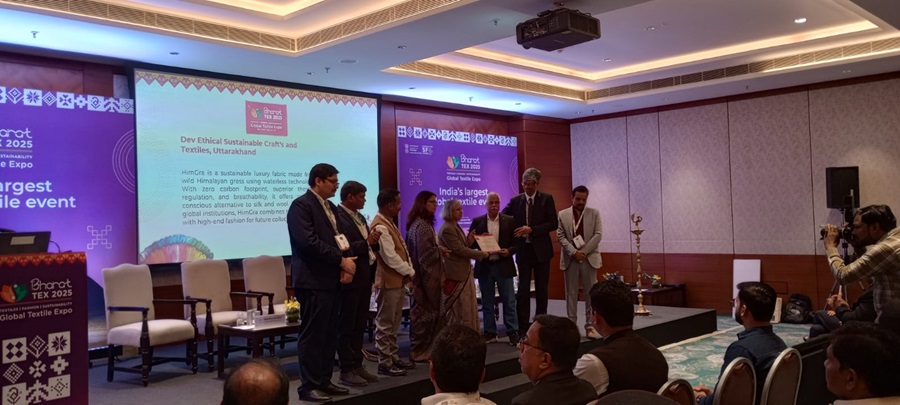
HimGra, a sustainable textile innovator from India, has achieved a major milestone at Bharat Tex 2025 by winning the Textile Startup Grand Challenge Award from the Ministry of Textiles, Government of India. The award highlights HimGra’s dedication to sustainability, innovation, and its socio-economic impact on the textile industry.
During the event at the Sustainability Pavilion (Hall No. 3), HimGra made several key announcements, showcasing its global expansion and new product offerings. The company is now entering international markets through strategic partnerships with leading brands such as Novica in the USA, Scoltex in Europe, and Malwan in Russia and Dubai. These partnerships mark HimGra’s push into key regions for sustainable fashion.
One of the highlights was the exclusive unveiling of the HimGra Women’s Wear Trend Book for AW26/27 by Cinzia, CEO of Ital Tex Srl. This new collection sets a high standard for sustainable luxury fashion, featuring HimGra’s unique ability to merge luxury with responsible sourcing.

HimGra also announced collaborations with renowned fashion institutions, including the North Columbia Institute of Fashion (USA), Kairo Fashion Academy (Egypt), and the Osaka School of Design (Japan). These partnerships aim to drive innovation and research, promoting the use of HimGra textiles in global fashion education.
In addition, HimGra introduced several new fabric innovations, including Jinal HimGra Denim, HimGra Linen, HimGra Marino, and HimGra Tusser. These fabrics are designed to meet the growing demand for sustainable and eco-conscious textile alternatives in both apparel and home textiles.
To ensure product quality and authenticity, HimGra has partnered with Testtex to establish HimGra Identification Standards, offering buyers a certified level of excellence.
The recognition from the Ministry of Textiles at Bharat Tex 2025 solidifies HimGra’s leadership in sustainable fashion. As the global demand for carbon-neutral and ethical materials rises, HimGra is poised to play a pivotal role in the industry’s transformation.
Hyve Group has announced the co-location of Autumn Fair and Glee at NEC Birmingham in September 2026, creating a powerful trade platform for the home, gift, and garden sectors. Autumn Fair will run from 6th-9th September, while Glee will take place 8th-10th September.
This strategic move, driven by industry feedback and research, aims to streamline the buying calendar, enhance exhibitor ROI, and expand opportunities for retailers. By aligning the UK’s leading home, gift, and fashion trade show with the top garden retail event, the co-location will unlock cross-sector buying synergies, access to wider networks, and improved efficiencies.
Exhibitors will benefit from broader exposure to high-quality buyers across multiple retail sectors, while attendees will enjoy an expanded range of suppliers, trends, and innovations. The combined event fosters new business partnerships, enhances sourcing efficiency, and strengthens innovation, driving growth across industries.
Both shows will retain their unique identity while offering a more comprehensive retail experience. Autumn Fair will continue its four-day format, while Glee remains a dedicated three-day showcase for the garden, leisure, and pet industries.
Jackson Szabo, Retail Portfolio Director at Hyve Group, stated: “This alignment reinforces our commitment to driving growth in the UK retail and garden sectors. We look forward to delivering an even more dynamic and commercially rewarding event in 2026.”
The co-location of Autumn Fair and Glee marks a transformative step for the industry, creating a future-proofed platform that maximizes value for exhibitors, buyers, and the wider retail community.


